-
 bitcoin
bitcoin $107015.826941 USD
-2.18% -
 ethereum
ethereum $3637.352324 USD
-5.18% -
 tether
tether $0.999831 USD
-0.02% -
 xrp
xrp $2.338078 USD
-6.23% -
 bnb
bnb $998.272150 USD
-6.97% -
 solana
solana $167.598257 USD
-10.12% -
 usd-coin
usd-coin $0.999863 USD
0.01% -
 tron
tron $0.282573 USD
-5.09% -
 dogecoin
dogecoin $0.169891 USD
-7.39% -
 cardano
cardano $0.557554 USD
-7.03% -
 hyperliquid
hyperliquid $39.914802 USD
-5.85% -
 chainlink
chainlink $15.414549 USD
-9.97% -
 bitcoin-cash
bitcoin-cash $510.361911 USD
-4.26% -
 ethena-usde
ethena-usde $0.999194 USD
-0.03% -
 stellar
stellar $0.282092 USD
-6.07%
What is CPU mining?
CPU mining uses your computer’s processor to mine cryptocurrencies like Monero, offering low-cost entry but minimal profits due to high energy costs and competition.
Sep 09, 2025 at 08:36 pm
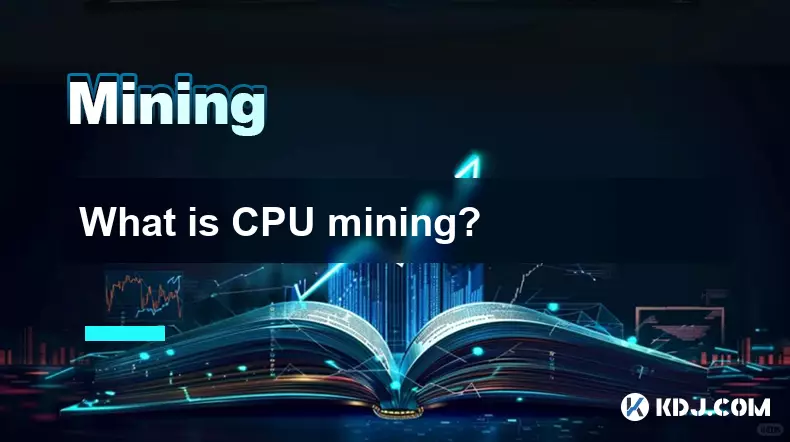
CPU Mining Explained
1. CPU mining refers to the process of using a computer's central processing unit (CPU) to solve complex mathematical problems required for validating transactions and securing a blockchain network. In the early days of cryptocurrencies like Bitcoin, miners relied heavily on CPUs because the computational difficulty was low enough to make this method viable. As the networks grew, so did the complexity of mining algorithms, making CPUs less efficient compared to more powerful hardware.
2. The core function of CPU mining is to perform hashing operations repeatedly until a valid block hash is found. These operations are part of the proof-of-work consensus mechanism used by many decentralized networks. While modern mining has shifted toward GPUs and ASICs due to their superior speed and efficiency, some cryptocurrencies still support CPU mining to promote decentralization and accessibility.
3. One advantage of CPU mining is its low entry barrier. Most users already own computers equipped with capable processors, eliminating the need for expensive specialized equipment. This makes it an attractive option for individuals interested in experimenting with cryptocurrency mining without significant financial investment.
4. However, CPU mining typically generates minimal returns when applied to major cryptocurrencies. The electricity costs often outweigh the rewards, especially on large networks where competition is fierce. For this reason, CPU mining remains more practical for lesser-known or newer coins designed specifically to resist ASIC dominance.
5. Some privacy-focused blockchains such as Monero have implemented algorithms like RandomX that favor CPU-based mining. These protocols aim to prevent centralization by ensuring that high-end ASIC rigs do not dominate the network, preserving fairness and broad participation among individual users.
How CPU Mining Works in Practice
1. To begin CPU mining, users must install mining software compatible with their operating system and the target cryptocurrency. Programs like XMRig are commonly used for Monero and other CPU-mineable coins. These applications utilize idle processor cycles to contribute computing power toward solving cryptographic puzzles.
2. Miners usually join a mining pool rather than working alone. A mining pool combines the processing power of multiple participants, increasing the chances of successfully mining a block. Rewards are then distributed proportionally based on each member’s contributed effort, providing more consistent payouts despite lower individual performance.
3. Configuration involves setting parameters such as the wallet address, pool server URL, and intensity level. Intensity determines how much of the CPU’s capacity will be dedicated to mining. Higher settings can lead to faster results but may cause overheating or degrade system performance during regular use.
4. Once configured, the miner runs continuously in the background. Modern CPUs handle multitasking well, allowing users to operate their machines normally while mining occurs. Still, prolonged usage at high loads can reduce hardware lifespan if proper cooling is not maintained.
5. Monitoring tools help track hashrate, accepted shares, and estimated earnings. These metrics allow miners to assess performance and adjust settings accordingly. Though profits remain modest, monitoring ensures transparency and helps identify potential issues such as connectivity problems or misconfigurations.
Coins Suitable for CPU Mining Today
1. Monero (XMR) stands out as one of the most prominent CPU-mined cryptocurrencies. Its RandomX algorithm is optimized for general-purpose processors and actively discourages ASIC involvement, maintaining a level playing field for everyday users.
2. VerusCoin (VRSC) utilizes a unique VerusHash algorithm that supports both CPU and GPU mining while emphasizing energy efficiency and quantum resistance. It promotes decentralized mining through fair distribution mechanisms.
3. Electroneum (ETN), although transitioning toward mobile mining apps, originally supported CPU mining and continues to offer accessible entry points for users with standard computing devices.
4. Aeternity (AE) allows hybrid mining that includes CPU participation, particularly during specific phases of its consensus model. While not exclusively CPU-dependent, it provides opportunities for processor-based contributors.
5. Zephyr (ZEPH) employs the RandomX variant called ZephyrProof, which emphasizes CPU-friendliness and aims to preserve decentralization by limiting advantages held by specialized mining hardware.
Frequently Asked Questions
What impact does CPU mining have on my computer?Running CPU mining software increases processor utilization significantly, which can raise temperatures and strain cooling systems. Extended operation under heavy load may shorten the lifespan of older components. Users should ensure adequate ventilation and consider limiting mining intensity during active computer use.
Is CPU mining profitable in 2024?For most mainstream cryptocurrencies, CPU mining is not financially rewarding due to high network difficulty and low output relative to energy consumption. However, certain niche or privacy-oriented coins may still offer marginal gains, particularly when leveraging free or underutilized computing resources.
Can I mine Bitcoin with a CPU?Technically yes, but practically no. Bitcoin’s SHA-256 algorithm is now dominated by highly efficient ASIC miners. Attempting to mine Bitcoin with a CPU would likely result in negligible returns over years of continuous operation, far below the cost of electricity.
Does CPU mining damage my processor?While modern CPUs are built to handle sustained workloads, constant full-load operation from mining can accelerate wear, especially if thermal management is inadequate. Regular monitoring of temperature and usage patterns helps mitigate long-term risks.
Disclaimer:info@kdj.com
The information provided is not trading advice. kdj.com does not assume any responsibility for any investments made based on the information provided in this article. Cryptocurrencies are highly volatile and it is highly recommended that you invest with caution after thorough research!
If you believe that the content used on this website infringes your copyright, please contact us immediately (info@kdj.com) and we will delete it promptly.
- Bittensor's Wild Ride: TAO Token's Volatile Moves Explained
- 2025-11-05 05:20:02
- Decoding Crypto's Wild Ride: Insights on Bitcoin, XRP, and the Future of Digital Assets
- 2025-11-05 05:30:01
- ASTER Crash, Binance & Market Chaos: Decoding Crypto's Wild Ride
- 2025-11-05 05:30:02
- BNB Price Plunge: Crypto Sell-Off Deepens, What's Next?
- 2025-11-05 05:50:13
- Unlocking Crypto's Future: NIP Group's Bitcoin Bet, Altcoin Liquidity Boost, and the Rise of Little Pepe
- 2025-11-05 05:50:13
- Backend-for-Frontend, Token Theft, and Security: Navigating the Treacherous Waters of Modern Web Apps
- 2025-11-05 05:10:01
Related knowledge
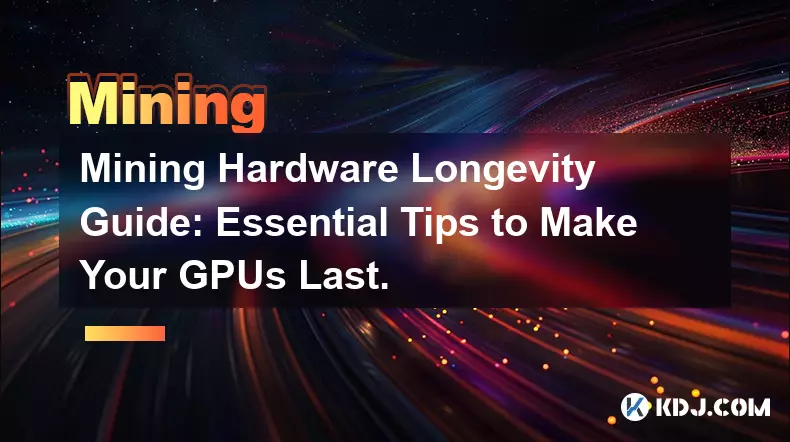
Mining Hardware Longevity Guide: Essential Tips to Make Your GPUs Last.
Nov 01,2025 at 04:00pm
Mining Hardware Longevity Guide: Essential Tips to Make Your GPUs LastAs cryptocurrency mining continues to attract both hobbyists and professionals, ...
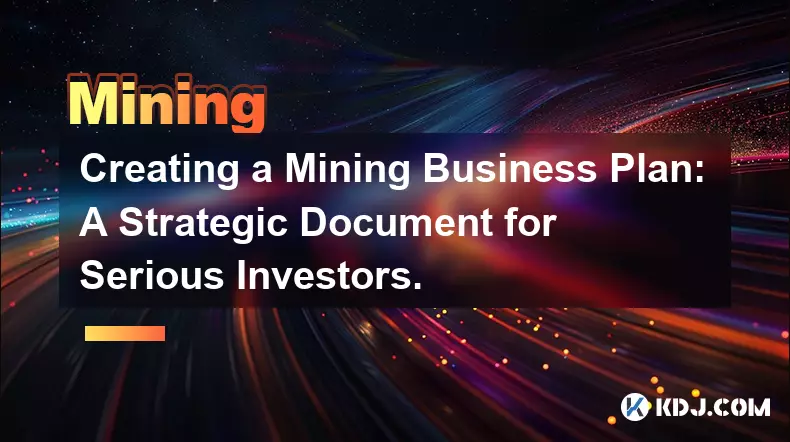
Creating a Mining Business Plan: A Strategic Document for Serious Investors.
Nov 04,2025 at 08:54pm
Defining the Core Objectives of a Cryptocurrency Mining Venture1. Establishing a clear mission for the mining operation ensures alignment with investo...
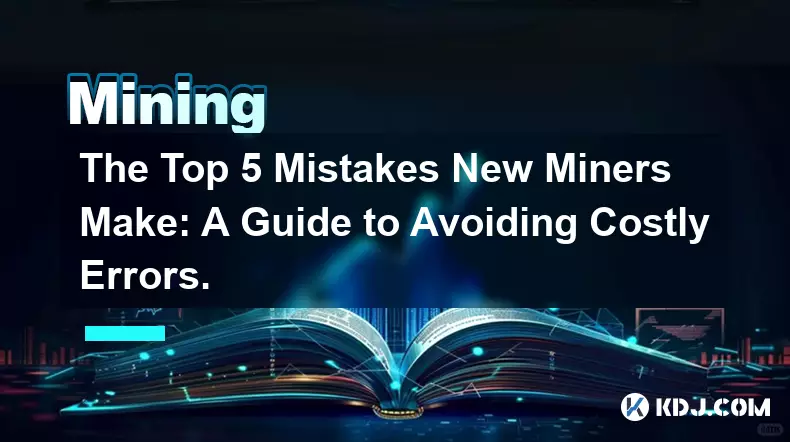
The Top 5 Mistakes New Miners Make: A Guide to Avoiding Costly Errors.
Nov 01,2025 at 10:18am
The Top 5 Mistakes New Miners Make: A Guide to Avoiding Costly Errors Entering the world of cryptocurrency mining can be both exciting and overwhelmin...

The Miner's Guide to Market Cycles: When to Hold and When to Sell.
Nov 03,2025 at 07:55pm
The Miner's Guide to Market Cycles: When to Hold and When to Sell Bitcoin mining has evolved from a hobbyist pursuit into a highly competitive, capita...
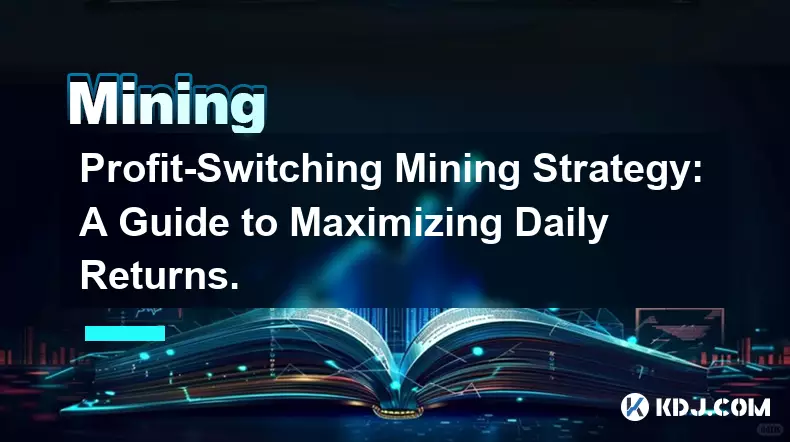
Profit-Switching Mining Strategy: A Guide to Maximizing Daily Returns.
Nov 03,2025 at 11:55am
Understanding Profit-Switching in Cryptocurrency Mining1. Profit-switching is a dynamic mining strategy that automatically redirects computational pow...

Setting Up Mining Alerts: A Guide to Monitoring Your Rigs 24/7.
Nov 03,2025 at 02:54pm
Why Continuous Monitoring Is Crucial in Cryptocurrency Mining1. Cryptocurrency mining operations rely heavily on hardware stability and network connec...

Mining Hardware Longevity Guide: Essential Tips to Make Your GPUs Last.
Nov 01,2025 at 04:00pm
Mining Hardware Longevity Guide: Essential Tips to Make Your GPUs LastAs cryptocurrency mining continues to attract both hobbyists and professionals, ...

Creating a Mining Business Plan: A Strategic Document for Serious Investors.
Nov 04,2025 at 08:54pm
Defining the Core Objectives of a Cryptocurrency Mining Venture1. Establishing a clear mission for the mining operation ensures alignment with investo...

The Top 5 Mistakes New Miners Make: A Guide to Avoiding Costly Errors.
Nov 01,2025 at 10:18am
The Top 5 Mistakes New Miners Make: A Guide to Avoiding Costly Errors Entering the world of cryptocurrency mining can be both exciting and overwhelmin...

The Miner's Guide to Market Cycles: When to Hold and When to Sell.
Nov 03,2025 at 07:55pm
The Miner's Guide to Market Cycles: When to Hold and When to Sell Bitcoin mining has evolved from a hobbyist pursuit into a highly competitive, capita...

Profit-Switching Mining Strategy: A Guide to Maximizing Daily Returns.
Nov 03,2025 at 11:55am
Understanding Profit-Switching in Cryptocurrency Mining1. Profit-switching is a dynamic mining strategy that automatically redirects computational pow...

Setting Up Mining Alerts: A Guide to Monitoring Your Rigs 24/7.
Nov 03,2025 at 02:54pm
Why Continuous Monitoring Is Crucial in Cryptocurrency Mining1. Cryptocurrency mining operations rely heavily on hardware stability and network connec...
See all articles










































































